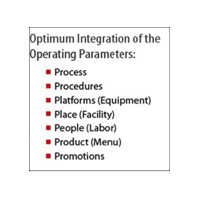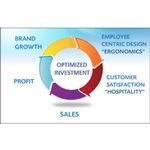The foodservice equipment and supplies industry has experienced a significant amount of consolidation of late. In fact, during the month of June, FE&S reported on four dealers buying five different companies. Rapid consolidation like this can make one wonder: If this keeps going on, will there only be one equipment supplier standing?
A monopolistic scenario such as this is not good for the foodservice industry. But no worries — this will never happen, since other new players will spring up to level the playing field.
Supplier consolidation is just a natural phenomenon that happens in all mature industries. This latest flurry of activity just happens to hit closer to home, which makes us all ask the age old question: how will this affect me — good, bad, or indifferent?
My initial hypothesis: consolidation is a good thing, since it can help companies gain efficiencies in areas such as customer service, production cycles and purchasing. Any efficiency gained should reduce waste in any processes, which is good, too, because this should represent a reduction in cost. All of these in the right combination should lead to a more effective and efficient flow of product through the supply chain to the end user, which benefits the industry.
That’s the positive interpretation of current events. There’s a downside, too. Consolidation can lead to inefficiencies of customer service, cost, etc.
How often have you had to deal with a vendor that is clueless about a new line, let alone a new supplier that they are now supposed to be representing? This is clearly an inefficiency of customer service. Or how about those instances where a vendor does not know how the new technology or equipment works, benefits the end user, or even how it compares to other similar products? This inefficiency of product knowledge and product application can affect the operator’s ability to make an informed purchasing decision, along with a supplier losing a sale.
Consolidation in its purest form should also be a good thing for the end user because, theoretically, it should translate into better integration at the store level. In other words, how does one piece of equipment work best and in synergy next to the other? If you consider that there may be several pieces in the puzzle of a restaurant, anyone that can figure out how to best integrate them will have an edge in the marketplace. Just like the best restaurants excel at integrating all the operating parameters they deal with on a daily basis, including how the equipment technology (platforms) best integrates with the rest of them (e.g. processes, procedures, people, place, product and promotions) should benefit the supplier base.
When consolidation occurs, it is important to take the necessary steps to avoid introducing new inefficiencies. The acquiring company needs to develop a clear plan of integration to help properly transform, absorb and realign the acquired pieces.
Similar to the approach we follow in any re-engineering and redesign project, any consolidation effort should start with the needs of the end user as the central point on the integration. This will provide the maximum “customer demand base of information” that can then spring forward the new acquisition faster, resulting in sales, profits and brand growth.

So, do you think that the integration of equipment suppliers that is happening is good for the industry? Or does it actually make it worse for the industry, since it has the potential to create more inefficiencies than efficiencies?
I would love to hear your viewpoint — This email address is being protected from spambots. You need JavaScript enabled to view it.



